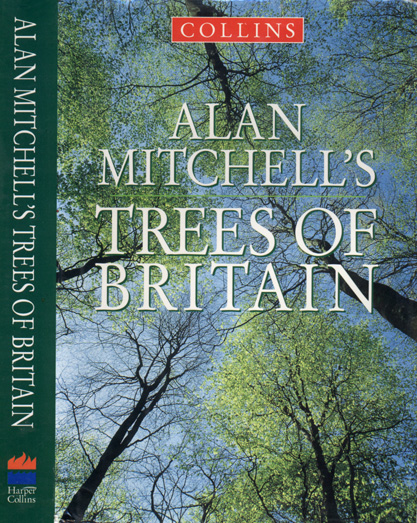
|
Alan Mitchell's Trees of Britain
|
a book review by Arthur Lee Jacobson
|
| Alan Mitchell's Trees of Britain. By Alan Mitchell. Published in 1996 by HarperCollins of London, England. Hardcover, 368 pages. 18 color photos, 121 black & white photos. ISBN 0-00219972-6. |
| Alan Mitchell (1922-1995) became famous in the world of tree study, especially in his native England, as the preeminent tree measurer. He wrote some 9 or 10 tree books, covering identification, history in cultivation, utility to people, and growth. His last, posthumous title cites the abundance, performance, strengths and weaknesses of 163 kinds of trees cultivated in Britain. |
| Above all the book gives valuable data on growth rates, life spans, and maximum sizes attained. It incidentally debunks myths, supplies identification tips, and serves as a soapbox wherein Mitchell extolls the virtues of certain trees, while sharply attacking trees he loathes.> |
| His prose is clear always and sometimes potent. In places it is refreshingly informal. Here is a sample, regarding Black Mulberry (Morus nigra): "This species has no place in a book devoted to inspiring and noble specimen trees, as it has never managed to make anything of the kind. A sprawling low tree on a short, bent and burred stem is as much as one can expect of it. I drag it in willingly, however, because who wants a book, or person, to be boringly predictable?" Mitchell's pronouncements are worthy of attention, being variously informative, amusing or provocative. Mitchell attacks acid rain hysteria, taproot misconceptions, the frequent planting of large-size nursery trees, and other pet peeves. He prefers large-growing species to small ones; he prefers long clean trunks, and evergreens or conifers seem disproportionately favored. |
On the whole, I love the book. Some of my criticisms are due doubtless to Mitchell's dying before he could polish the book fully. There are glitches. The introduction is very weak --a brief biography of Mitchell, and notes on estimating tree ages and measuring heights. The book ends with an annotated list of notable places to visit trees in the British Isles and Ireland, followed by an index. The tree accounts are intended to be alphabetic by scientific name, but are only partially so in execution (e.g., Tsuga precedes Torreya). The accounts often fail to cite the tallest tree specimens, along with the stoutest, oldest, fastest or grandest. For some accounts deceased champion specimens are cited, in most only ones currently alive are admitted. Data is sometimes given for growth in the U.S., and sometimes not. Such inconsistencies are understandable given Mitchell's declining health --and could be fixed in a subsequent edition by a competent editor. The book is nonetheless a valuable resource, on high quality paper, with good photographs, fairly priced, and I completely commend it. It will help all involved with the planting and care of landscape and forestry trees. It is most assuredly not to be dismissed as just a book of tree measurements.
|
(Originally published in the Washington Park Arboretum Bulletin 59(2) in 1997)
Back |
|
|

